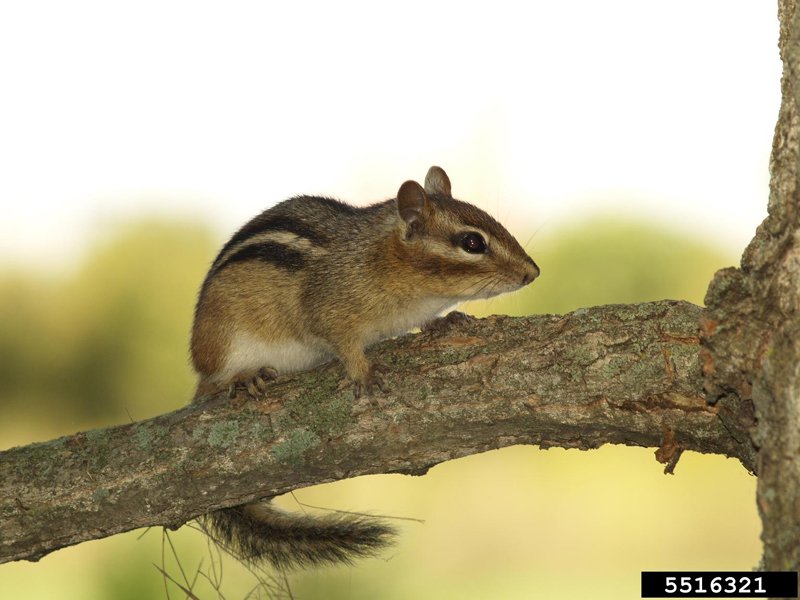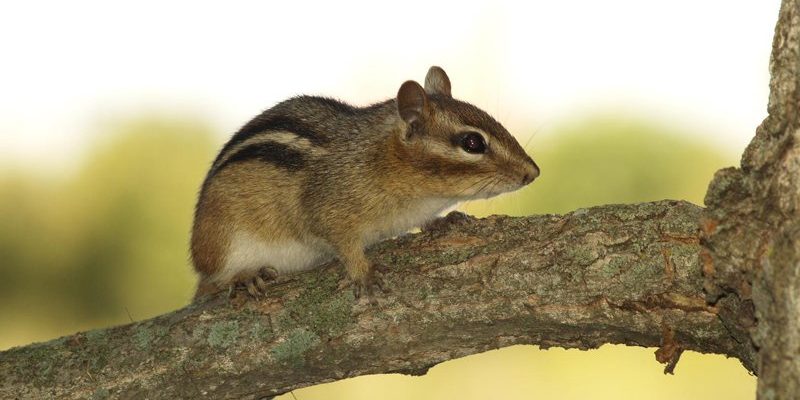
If you’ve ever wandered through a forest or park, you might have spotted a little creature darting about, its cheeks bulging with food. That’s likely the Eastern Chipmunk! These small, striped mammals are more than just cute faces; they play a vital role in our ecosystems. With their lively antics and remarkable foraging skills, Eastern Chipmunks are a delight to observe and an important part of their habitats.
Originating from North America, Eastern Chipmunks have a distinctive appearance, featuring light brown fur with signature stripes running down their backs. While they may seem like simple little rodents, their behavior and lifestyle are quite fascinating. They are known for their incredible ability to gather and store food, making them expert survivalists when the seasons change. Let’s dive deeper into the world of Eastern Chipmunks and discover what makes them so special!
Physical Characteristics
When you first see an Eastern Chipmunk, you’ll notice their small size—typically about 9 to 10 inches long, including their tail. Their fur is primarily brown or gray with five dark stripes running from their head to their tail. These stripes help with camouflage, allowing chipmunks to blend into their surroundings, especially when they’re foraging on the ground. You might think of them as nature’s little ninjas, sneaking around while searching for food.
Besides their striking stripes, these chipmunks have big, bright eyes that give them an inquisitive look. Their limbs are short but strong, enabling them to scurry up trees and leap between branches when feeling threatened. One of their most charming features is their cheek pouches, which they use to store food temporarily before carrying it back to their burrows. Imagine putting snacks in your cheeks—how cute is that?
Habitat and Range
Eastern Chipmunks are commonly found in the eastern United States and parts of Canada. They love habitats that provide cover, such as deciduous forests, shrublands, and even residential areas with plenty of trees and bushes. They typically build their homes in burrows, which can be quite elaborate. These burrows often have multiple tunnels and chambers for nesting and storing food. Picture a cozy little underground apartment equipped with all the essentials!
During the day, these chipmunks tend to be most active around dawn and dusk. This behavior helps them avoid predators and take advantage of the cooler temperatures. While they’re not great at climbing high, they do enjoy jumping from branch to branch at lower heights, making tree cover crucial for their survival. So, when you’re out for a walk, keep an eye out for these lively little critters in their natural habitat!
Diet and Feeding Habits
Eastern Chipmunks are omnivores, which means they eat both plants and animals. Their diet primarily consists of seeds, nuts, fruits, and insects. They have a particular fondness for acorns, which they save up for the winter months. Think of them as nature’s little hoarders, stashing away supplies for a rainy day!
In the fall, chipmunks engage in a behavior known as “caching,” where they gather and store food in their burrows. Some chipmunks have been known to stash away up to 8,000 seeds in preparation for the cold months! You might be wondering how they remember where they put everything. They have excellent spatial memory, allowing them to locate their hidden treasures when food is scarce.
Reproduction and Lifespan
The mating season for Eastern Chipmunks typically occurs in early spring. After a gestation period of about 31 days, a female can give birth to a litter of 2 to 8 young. The babies are born blind and hairless, relying entirely on their mother for warmth and nourishment. As they grow, they gradually develop fur and start to explore their surroundings.
Interestingly, young chipmunks are weaned by about six weeks and start to venture out of the burrow, learning how to forage for food. In the wild, Eastern Chipmunks have a lifespan of around 2 to 3 years, though some can live longer in captivity. In the circle of life, each chipmunk contributes to the ecosystem, whether through their foraging habits or as a food source for predators.
Behavior and Social Structure
Eastern Chipmunks are generally solitary animals, with the exception of mating season or when a female is caring for her young. They are highly territorial and will defend their space against intruders. You might catch them chattering away, which is their way of communicating with each other or warning off rivals. It’s like they have their own little language!
These chipmunks are quite clever too. They are known to produce a variety of vocalizations to signal different situations—like alarm calls or mating calls. When danger is near, you might see a chipmunk freeze or scurry back to the safety of its burrow, using quick reflexes to escape harm. It’s this blend of caution and curiosity that makes observing Eastern Chipmunks a delightful experience.
Table of Eastern Chipmunk Facts
| Common Name: | Eastern Chipmunk |
| Scientific Name: | Tamias striatus |
| Size: | 9 to 10 inches (including tail) |
| Weight: | 3 to 5 ounces |
| Diet: | Seeds, nuts, fruits, insects |
| Habitat: | Forests, shrublands, residential areas |
| Lifespan: | 2 to 3 years in the wild |
Conservation Status
Currently, the Eastern Chipmunk is not considered endangered. Their populations are stable, thanks in part to their adaptability to various environments, including suburban areas. However, like all wildlife, they face threats from habitat loss and predators. Urban development can reduce their living space, forcing them to compete with other animals for resources.
Conservation efforts that focus on preserving natural habitats benefit Eastern Chipmunks and many other species. Encouraging local greenery and keeping neighborhoods wildlife-friendly can create a healthier ecosystem. You might even spot these lively little creatures in your own backyard if you create an inviting environment!
Interactions with Humans
Eastern Chipmunks often find themselves in close proximity to humans, especially in suburban areas. While they are generally harmless and somewhat curious about the human world, they can become a nuisance if they begin raiding bird feeders or gardens. You might find them nibbling on the seeds you’ve put out for birds or burrowing in your backyard.
To peacefully coexist with Eastern Chipmunks, consider using barriers to protect your garden or bird feeders. Planting native vegetation can also help attract chipmunks while providing them with natural food sources. By understanding their behavior and needs, you can ensure these cute little critters don’t turn into pesky intruders!
FAQ
What is the difference between Eastern Chipmunks and other chipmunk species?
The Eastern Chipmunk, or Tamias striatus, is commonly found in the eastern United States while other species, like the Siberian Chipmunk, are found in Asia. While they share similar physical characteristics, Eastern Chipmunks are smaller and have different habitats compared to their counterparts.
How can I attract Eastern Chipmunks to my yard?
To attract Eastern Chipmunks, consider planting native flowers, bushes, or trees that produce seeds and nuts. Providing a mix of habitats, such as shrubs for cover and open areas for foraging, can create an inviting environment. Bird feeders stocked with seeds can also entice them to visit!
Are Eastern Chipmunks dangerous to pets?
Generally speaking, Eastern Chipmunks are not dangerous to pets. However, they can be quite fast and may provoke curious dogs or cats. It’s best to supervise your pets if they show interest in chipmunks to avoid any unexpected chases or confrontations.
What should I do if I find a baby chipmunk?
If you find a baby chipmunk, it’s important to assess the situation first. If the baby appears healthy and is not in immediate danger, it’s often best to leave it alone as the mother may be nearby. If you suspect the baby is orphaned or injured, contacting a wildlife rehabilitator would be the best course of action.
How can I differentiate between a chipmunk and a squirrel?
While chipmunks and squirrels may look somewhat similar, chipmunks are smaller with distinctive stripes along their backs. Squirrels tend to have bushier tails and are generally larger. Observing their behavior can also help; chipmunks are often seen on the ground foraging, while squirrels are more likely to be found climbing trees.
Do Eastern Chipmunks hibernate?
Eastern Chipmunks do not truly hibernate like some other mammals. Instead, they enter a state of torpor during the coldest months, where their activity slows down significantly. They wake periodically to forage from their stored food, which is why caching is so vital to their survival!
What is the lifespan of an Eastern Chipmunk in captivity?
In captivity, with proper care and no threats from predators, Eastern Chipmunks can live longer than in the wild—sometimes up to 8 years. Factors like diet, environment, and veterinary care significantly affect their lifespan in human care.
Are Eastern Chipmunks social animals?
Eastern Chipmunks are generally solitary creatures, particularly outside of the breeding season. They establish their own territories and may exhibit aggressive behavior towards others. However, they do communicate through vocalizations and body language, especially during mating season.
Can Eastern Chipmunks carry diseases?
Like many wild animals, Eastern Chipmunks can carry diseases such as leptospirosis or hantavirus. However, the risk of transmission to humans is low. Practicing good hygiene and avoiding contact with wild chipmunks can help reduce any potential risks.
How do Eastern Chipmunks adapt to different environments?
Eastern Chipmunks are highly adaptable animals. They can thrive in various habitats—from forests to urban backyards—by changing their diets and nesting behaviors based on available resources. Their cleverness and resourcefulness are key factors in their survival.
Why do Eastern Chipmunks make such unique sounds?
Eastern Chipmunks use a variety of sounds to communicate. These include chirps, chucks, and alarm calls, each serving a different purpose. For example, alarm calls help alert other chipmunks about potential threats, while other sounds may attract mates during breeding season.
What role do Eastern Chipmunks play in the ecosystem?
Eastern Chipmunks play an important role in their ecosystems as foragers and seed dispersers. By caching seeds and nuts, they inadvertently help with plant propagation, contributing to a diverse ecosystem. Their presence supports food chains, providing sustenance for predators like hawks and foxes, making them a vital part of their environment.

